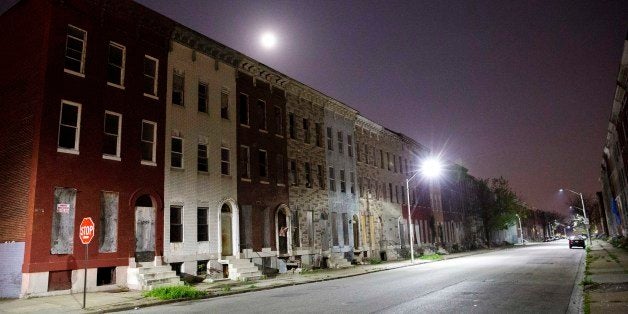
We have heard a lot in the last couple of weeks about the impact neighborhoods may have on the outcomes of children who grow up in them. New research reinforces the idea that neighborhoods do matter. While this is true, we should be thoughtful and careful about the conclusions we draw from it.
Recent work by Raj Chetty and Nathan Hendron of the Equality of Opportunity Project at Harvard demonstrates a "childhood exposure effect," suppressing outcomes for kids growing up in some depressed neighborhoods. While the study is interesting for all kinds of reasons, the research has received particular attention in part because it demonstrates that the worst offender is Baltimore.
Chetty et al produced a second study with the first that re-examined a maligned federal program called Moving to Opportunity, in which some families were moved out of high poverty neighborhoods, and compared to others who weren't. Initially, it appeared that moving out did not have a significant effect on children's future outcomes. The new revisit, however, indicates not only that moving out worked, but also that the younger a child moved, the better were his or her outcomes relative to children who didn't, and to children who moved out at older ages.
Any time we find an approach that works, we should use it with those who want it. But we have to be careful about two things. First, what story are we telling ourselves about why the approach works? Second, should we put all our eggs in that basket? In this case, what about people who don't want to move? Do they have options, too?
Wall Street Journal columnist Holman W. Jenkins, Jr. showed why we must approach both questions with care in a single column. While writing about the positive benefits of moving the cream of the crop out of bleak neighborhoods, he noted that such neighborhoods, "aren't just places people find it hard to get out of. They are places where people from elsewhere end up when they can't make a go of their lives." Holman later added, "Government programs can't save everybody in such sad places where people without money, prospects or good life habits tend to congregate. But it can help the willing to get out."
People find themselves in neighborhoods with chronic poverty for all kinds of reasons that have nothing to do with being bad at being people. Birth, housing prices, crises that drain assets, or the need to be in proximity to a loved one or a diaspora represent just a few. Chronic poverty then can have a suppressive effect on everything from outcomes to hope.
We don't know the ratio in a Baltimore between those who are stuck, and those who are wallowing. Anecdotal evidence suggests, however, and from public policy and human decency perspectives we should assume, that the majority of people are stuck. Taken to the extreme, the alternative assumption would suggest shipping the stuck few out on the nearest chopper and leaving the majority wallowers to live in some Purge-like free for all.
And what about the question of shipping out? In general, we are a species that doesn't like to be uprooted. Why would that be different for families in such neighborhoods?
When the antipoverty fund I ran spent a summer talking to nearly 1000 people in Boston's Grove Hall -- a neighborhood the data shows is burdened with high levels of crime, violence and unemployment -- the dominant theme wasn't, "Get me out of here." It was, "Here's what I like, and here's what I want to change."
We have to entertain the possibility that social isolation and an inability to direct investments and programs towards outcomes that the residents themselves value also contribute to a childhood exposure effect. When we understand that, helping those who want to move becomes sound public policy, but "that place is hopeless so get the survivors out while you can," stinks.
Neighborhoods matter. So do the aspirations of all the people in them. Once you embrace that people in burdened neighborhoods aspire like the rest of us, then "exit" as a strategy is at best incomplete.
